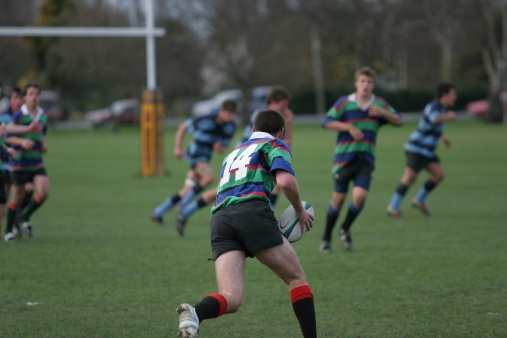There has been lots of discussion around the effect of artificial grass surfaces when it comes to injury in sports. However, there are undoubtedly some definite advantages when it comes to improving the skills of young sportsmen. As a rugby player for over twenty years, I thought it might be interesting to focus on how artificial pitches can improve the skills of rugby players, especially younger players who are just starting out.
Training in Winter
The prospect of training nights in winter used to fill me with dread, since they often entailed running around on something that resembled a ploughed field with mud dripping over my ankles, along with an unresponsive ball. Even as adults, we found this frustrating, but imagine being introduced to the sport as an 8 to 9-year-old and having to learn the basics under those conditions; I’m pretty sure that a lot of youngsters have been lost to the sport because of the less than pleasant training facilities.
During my heyday, when conditions got too bad, we were afforded the pleasure of going to an artificial pitch to complete Thursdays team run. These surfaces consisted of either something resembling gravel or sand covered artificial grass surface on which any fall or slip would lead to either carpet burns or gravel rash. Fortunately, things have moved on since then, and advancements in technology mean that artificial surfaces while if still not perfect are more conducive to contact sports such as rugby.
Does Artificial Grass Impact Game Improvement?
So enough reminiscing, let’s get back to the subject in hand. While there is probably still some correlation between 3G and 4G surfaces, and lower limb injuries or concussions when matches are played on them, I honestly believe they offer significant advantages when it comes to learning the basics of the game and sharpening up existing skills.
Rugby benefits from a dry firm surface on which to undertake routines such as passing and handling drills. In particular for juniors, it is much easier to handle a rugby ball that is dry and free of mud, and having that firm dry surface allows them to get a good grounding and build up confidence when mastering how to pass and kick a rugby ball correctly. Developing those basic skills are paramount when it comes to producing the rugby stars of the future. By being confident that you aren't likely to slip while running, players can focus better on their drills. Constant practice will also assist muscle memory, so passing both left and right will become second nature in games.
How Kicking and Converting Tries is Influenced by Artificial Grass
Kicking both from the hand and off the deck is something that is much easier to practice off a firm dry surface. Trust me, it wasn’t easy to practice kicking goals off some of the surfaces that I had to contend with, where mud and puddles of water were commonplace. Rugby players know how crucial it is for the non-kicking foot to be stable, and that's why an artificial grass pitch has a significant advantage over a grass one. The fact that there is little chance of slipping will help players focus on keeping their head down and perfect their technique. It doesn't matter if you're practising kicking that match-winning conversion, or hitting that raking touch finder, you can rely on your leading foot to be planted.
Training on Artificial Grass as a Forward Player
So, what about the forward players you may ask? Well in the modern game, forwards are more rounded individuals than in the old days and as such required to have a greater skill set. So, artificial pitches are ideal for practising close quarter passing drills that have become a common sight in the modern game.
Being able to secure good first phase ball is an important part of any successful rugby team. Therefore, having a good scrum and line out is an absolute must. Artificial grass pitches provide a stable surface on which to practice scrummaging and perfect that technique, where just like kicking, stability underfoot is essential. It is also necessary to have a hooker who is proficient at throwing in balls, and again, an artificial surface provides a perfect environment for them to develop these skills.
To Finish…
So, in conclusion while the jury is still out on 4G pitches for matches due to the increased risk of injury, I, for one, truly believe that when it comes to many aspects of training artificial grass surfaces are ideal for many aspects of training. Thank you for reading.







